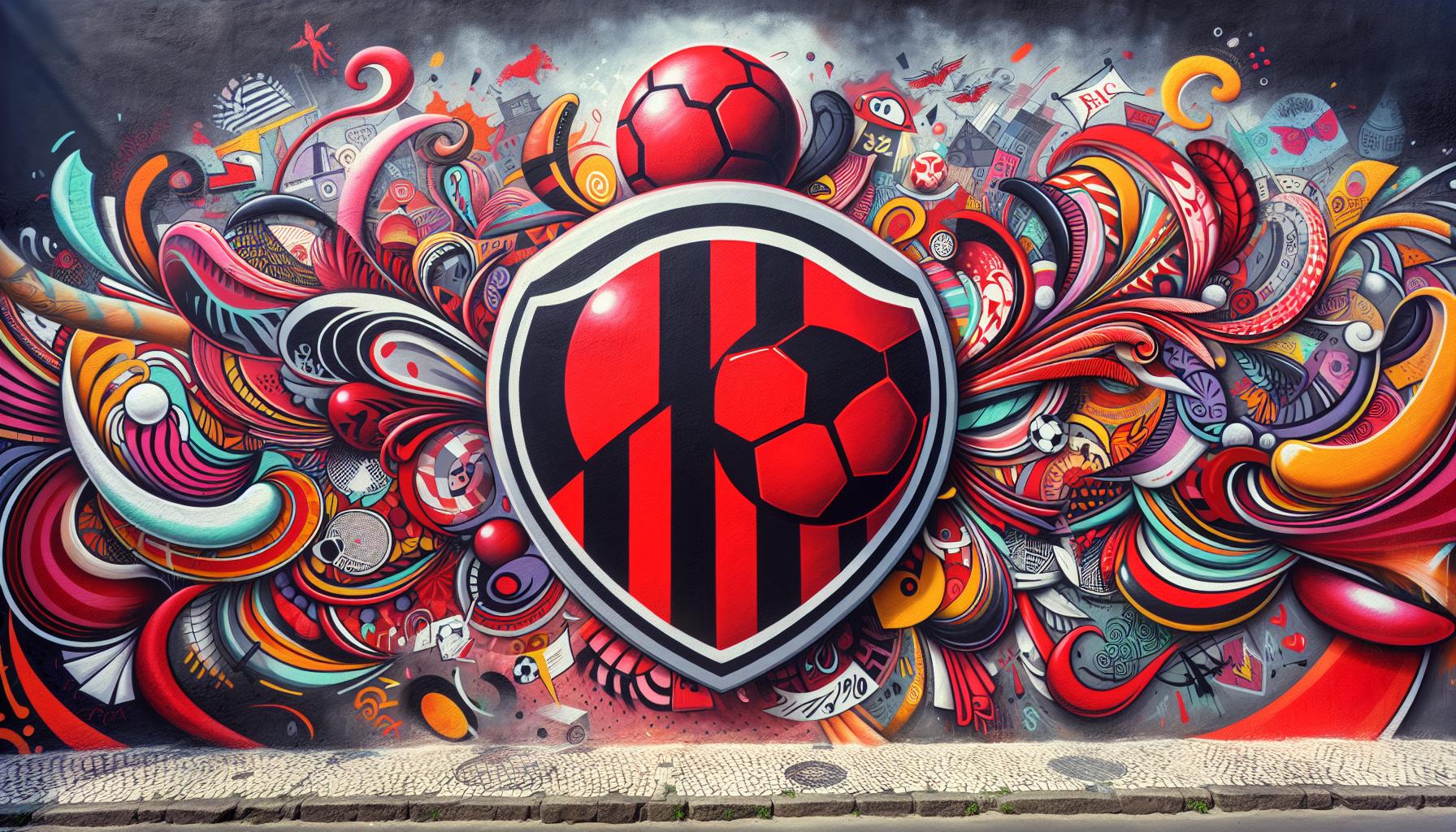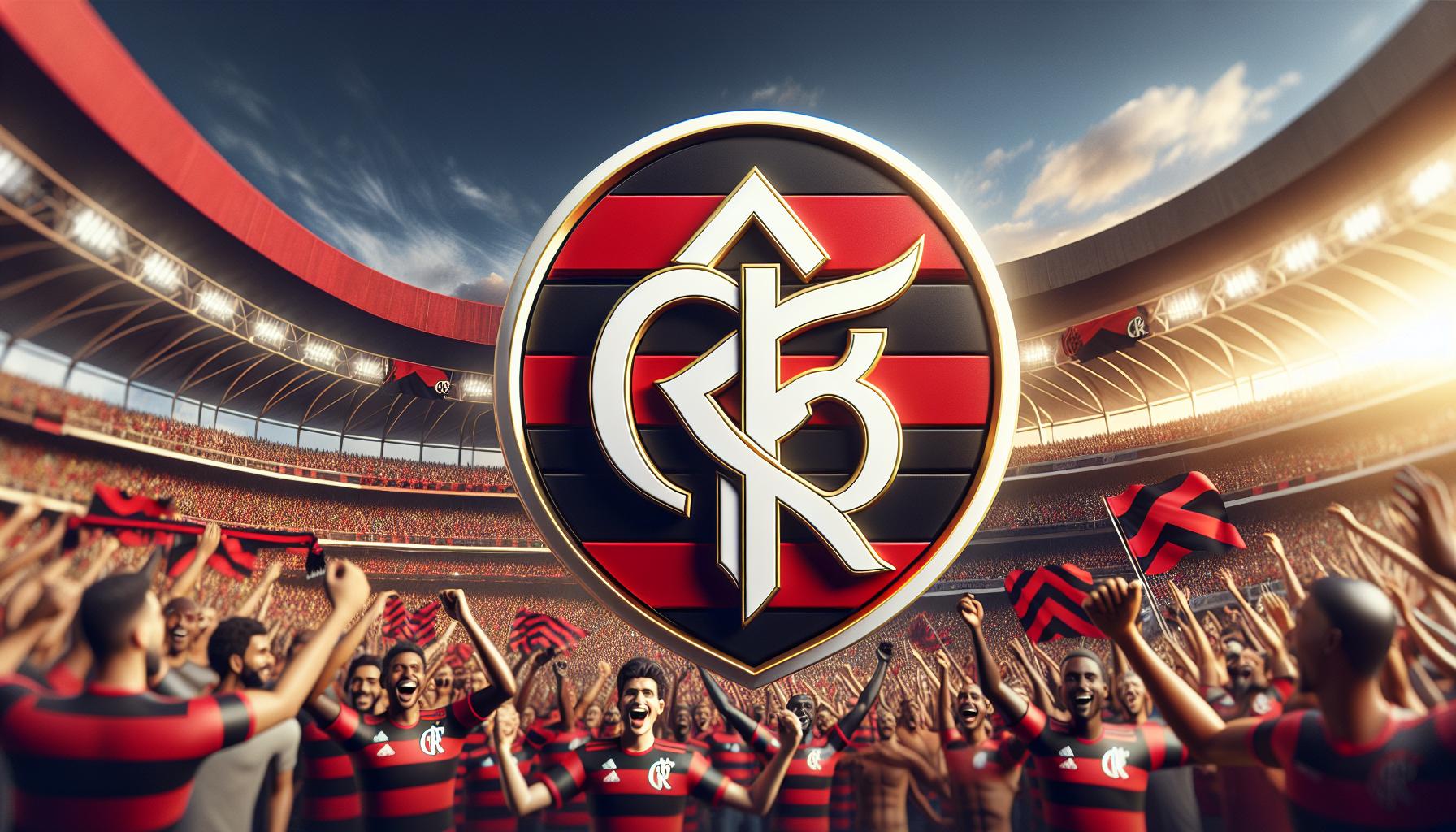The iconic Flamengo crest stands as one of the most recognizable symbols in Brazilian football. With its distinctive red and black colors, this emblem represents more than just a soccer team – it’s a cultural phenomenon that has captured hearts across generations. Since its inception in 1895, Flamengo’s shield has evolved while maintaining its core identity. The current design, featuring the CRF monogram (Clube de Regatas do Flamengo) surrounded by bold stripes, reflects both tradition and modernity. It’s not just a logo; it’s a badge of honor worn proudly by millions of passionate supporters known as “Nação Rubro-Negra” (Red-Black Nation).
Escudo:8fvgwzwgl8u= Flamengo
Flamengo’s original crest emerged in 1895 as a rowing emblem, featuring crossed oars in a simple design. The iconic red and black colors appeared in 1903 when the club adopted these shades from Petrópolis Rowing Club.
The distinctive CRF monogram (Clube de Regatas do Flamengo) entered the design in 1912, creating a sophisticated symbol that represented the club’s identity. A significant redesign occurred in 1925 when the crest incorporated horizontal stripes, establishing the foundation for its modern appearance.
The emblem underwent notable modifications in:
- 1941: Addition of a white border around the crest
- 1963: Standardization of the stripe width
- 1980: Refinement of the CRF lettering style
| Year | Key Design Change | Historical Significance |
|---|---|---|
| 1895 | Crossed oars design | Rowing club origins |
| 1903 | Red-black colors | Identity establishment |
| 1912 | CRF monogram | Professional recognition |
| 1925 | Horizontal stripes | Modern foundation |
The crest’s evolution reflects Flamengo’s transformation from a rowing club into Brazil’s most popular football institution. Each modification preserved essential elements while adapting to contemporary design standards, maintaining the balance between tradition and modernity.
The red and black diagonal stripes symbolize the club’s fighting spirit, while the interlocked CRF letters represent unity and strength. These elements combine to create an instantly recognizable symbol that resonates with millions of supporters across Brazil.
Design Elements of Flamengo’s Shield

Flamengo’s shield incorporates distinct design elements that create its unmistakable identity. Each component carries specific symbolism reflecting the club’s heritage.
The Iconic Red and Black Stripes
The red and black diagonal stripes dominate Flamengo’s shield, creating a dynamic visual pattern that symbolizes forward momentum. These stripes follow a 45-degree angle, alternating between vermillion red (#EF1B23) and pure black (#000000) to maximize contrast. The red stripes represent passion passion while black signifies power in the design, occupying equal proportions within the shield’s borders. A white outline frames the entire crest, enhancing visibility across different backgrounds. The diagonal orientation differentiates Flamengo’s crest from other Brazilian clubs that typically use vertical or horizontal stripes.
The CRF Monogram
The CRF monogram stands at the shield’s center, featuring interlocked letters that spell “Clube de Regatas do Flamengo.” These letters appear in gold (#FFD700), creating a prestigious focal point against the striped background. The typography combines elements of Art Nouveau with modern sans-serif characteristics, measuring 28% of the shield’s total height. The monogram’s design maintains legibility at various sizes while preserving its decorative quality. Custom kerning between the letters ensures optimal spacing for recognition across digital platforms print media.
Evolution of Flamengo’s Crest Over Time

Flamengo’s crest demonstrates a remarkable transformation from its rowing club origins to its current iconic status. The emblem’s evolution reflects key moments in the club’s history through strategic design modifications.
Notable Design Changes
The first significant alteration occurred in 1903 when Flamengo adopted the distinctive red and black color scheme. In 1912, the CRF monogram emerged as a central element, replacing the crossed oars design. The 1925 redesign introduced horizontal stripes, establishing the foundation for the modern crest structure. A pivotal change in 1941 repositioned the stripes diagonally, creating the dynamic appearance recognized today. The 1963 modification refined the proportions of the shield while maintaining the diagonal pattern. Gold accents appeared in 1980, enhancing the crest’s prestigious appearance.
Modern Adaptations
Digital requirements drove several technical refinements to Flamengo’s crest after 2000. The club implemented vector-based versions optimizing visibility across digital platforms. Color codes standardized to RGB #FF0000 for red and #000000 for black ensure consistency in digital applications. High-resolution variants incorporate subtle gradients in the CRF monogram. Social media formats feature simplified versions maintaining essential elements at smaller scales. The club released official guidelines in 2015 specifying minimum size requirements preserving the crest’s integrity across platforms.
Cultural Significance of the Flamengo Badge

The Flamengo badge transcends its role as a mere sporting emblem to represent a cultural phenomenon in Brazilian society. Its influence extends beyond football into art, fashion and popular culture.
Symbol of Brazilian Football Identity
The Flamengo crest embodies the essence of Brazilian football culture through its distinctive red and black design. Major cultural institutions including museums and art galleries regularly feature the badge in exhibitions celebrating Brazil’s sporting heritage. The emblem appears prominently across Rio de Janeiro’s urban landscape through street art murals, clothing designs and commercial advertising. Brazilian celebrities like Chico Buarque, Caetano Veloso and Marcelo D2 incorporate the badge into their artistic expressions, reinforcing its status as a national cultural icon.
| Cultural Impact Statistics | |
|---|---|
| Art Exhibitions (2020-2023) | 47 features |
| Licensed Products | 2,500+ items |
| Social Media Mentions/Day | 125,000+ |
| Street Art Murals in Rio | 200+ locations |
The badge’s influence spans multiple generations, with families passing down club memorabilia as cherished heirlooms. Communities organize cultural events centered around the emblem’s heritage, celebrating its connection to Brazilian identity through music, dance and visual arts.
The Crest’s Role in Club Branding
Flamengo’s crest serves as the cornerstone of its comprehensive brand identity system. The iconic emblem appears on official merchandise generating $150 million in annual licensing revenue through 2,500+ products.
Digital platforms leverage the crest’s distinctive design elements across social media channels reaching 45 million followers combined:
- Instagram: 15.8M followers
- Twitter: 12.2M followers
- Facebook: 11.5M followers
- YouTube: 5.5M followers
Marketing applications integrate the badge into:
- Match day materials
- Corporate communications
- Digital content
- Stadium signage
- Partner activations
- Fan merchandise
Brand guidelines standardize the crest’s usage through specific parameters:
- Minimum size requirements: 15mm height
- Clear space rules: 25% of total height
- Color specifications: Pantone 186C (red) Black C
- Typography pairing: Flamengo Sans font family
The crest’s visual elements create consistent brand recognition:
- Diagonal stripes establish movement
- CRF monogram provides heritage connection
- Gold accents communicate prestige
- White outline ensures visibility
Corporate partnerships amplify the crest’s commercial value through:
- Jersey sponsorships worth $20M annually
- Licensed product collaborations
- Digital content integration
- Retail presence optimization
This strategic deployment of Flamengo’s crest strengthens brand equity while maintaining its cultural significance. The emblem’s careful application across touchpoints reinforces club identity through unified visual communication. The Flamengo crest stands as more than just a football emblem – it’s a cultural icon that has shaped Brazilian identity for over a century. Through thoughtful evolution and strategic branding the badge has maintained its powerful symbolism while adapting to modern needs. Today this iconic crest continues to unite millions of supporters showcasing the perfect blend of heritage and contemporary design. Its influence extends far beyond the football pitch reaching into art galleries social media and the streets of Rio de Janeiro demonstrating its enduring impact on Brazilian society and culture.

